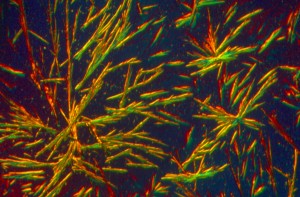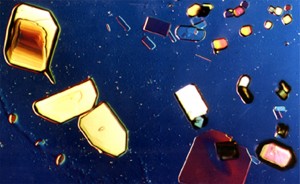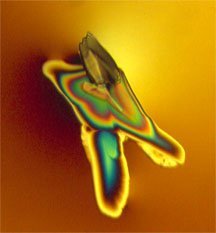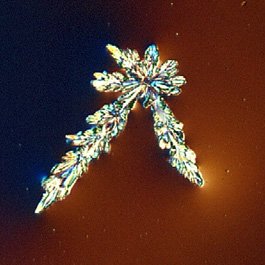To soften wine and add complexity, a common wine making practice, especially for reds is “secondary” or malolactic fermentation.
After primary fermentation is complete (sugar going to alcohol), usually specific bacteria are added to convert harsh hard aggressive malic acid to the softer creamier lactic acid. Malolactic fermentation (MLF) gives a buttery feel and lush taste to a wine.
When we compare the microscopic ‘signature’ of malic acid to lactic acid, notice that lactic acid (on the left) reveals a smaller molecular display while malic acid shows large angular conformation. In my experience of photographing ‘everything’ acids, in general are angular and sharp.
Malolactic fermentation, typically used for red wine, may be avoided for white wines. MLF (or malo) in white wines, like chardonnay, clearly affects style.
Do you have a favorite style chardonnay? Compare Grgich Hills (No MLF) on the left and this Kenwood chardonnay (100% MLF) to see microscopic expressions that seem to correlate with wine style. The Grgich chardonnay was a leaner, food friendly wine while the Kenwood char was big and buttery.
A further explanation of malo can be found at BLOG YOUR WINE – worth reading.
And though some people think this photography through the microscope simply offers random abstract images it can also reveal style, texture or the ‘spirit’ of the wine.
A video about MLF
CLICK for more excellent tech talk about MLF from Vintessential Labs Down Under
Vintessential has a lot of useful information for the winemaker.




